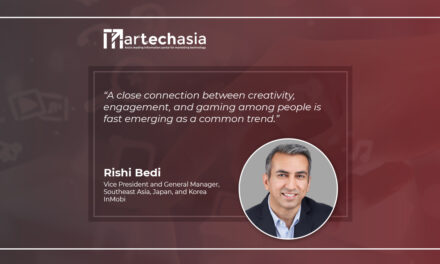Improvements in the customer experience through the use of AI has for a number of years been seen as the next frontier that can help companies streamline processes, personalize marketing, make customer recommendations and help maximize the value of their brand. However, across industries, many have often struggled to secure the deep customer engagement benefits that AI has promised. At the same time, customer confidence in self-service channels for transactional activities is increasing, leading them to expect similar outcomes in the way they work with brands and organizations.
How can we achieve the promise of AI-enabled customer service? Can generative AI help address existing challenges? How can we find the right balance between empathy and efficiency when the human factor and oversight is removed?
To find out more, MartechAsia speaks with Jay Sanderson, Senior Product Marketing Manager at Progress about the potential of AI, pitfalls to avoid and what the future entails.
In the past, AI has often been deployed to remove human intervention and respond to simple queries, for example, chatbots in customer service applications. The experience however has often not been satisfactory leading to increased customer frustration. How can generative AI can solve these challenges?
It is certainly true that chatbots are not perfect. According to a YouGov study, chatbots have been a source of frustration for 41 percent of Singaporean customers – who prefer human interactions, instead.
However, generative AI can be a game changer as it is designed to understand the nuances of human language. This, then, allows for more natural and resonant responses, that bring personalisation as well as context to the conversation – which can be used to win over customers who feel this way.
Through the ability to align content and services with customers’ interests and preferences, businesses can boost the relevance of their offerings and make customers feel cared for. For example, customers who prefer sports equipment are more likely to respond to emails offering products in the same category. Generative AI works best when business teams train their models using accurate and relevant data. They should also test and adjust their marketing content so that they can consistently connect with their customers.

How are businesses leveraging generative AI to improve and redefine customer experiences? What are some of examples of the work processes that are most prime for generative AI use?
Generative AI has immense potential to revolutionise businesses. From personalising customer experiences to enhancing conversations and automating business decisions – the breadth of how it can completely upend the status quo is truly exhaustive.
For example, teams can gain deeper insight into where their customers are on their journey by using segmentation tools powered by generative AI. From there, they can use this information to persuade them to perform certain actions, such as completing purchases or adding new items to their cart that might interest them.
Generative AI can also power real-time personalised marketing by enabling content professionals to analyse customer interactions and refine campaigns across multiple channels of interaction. These features can ensure a more engaging, relevant, and satisfying experience for customers.
On the customer conversation front, generative AI can automate workflows and support chatbots, allowing teams to address customer queries quickly. This can be seen with internet service providers leveraging this technology to provide adaptive technical support and deflect frequently encountered issues to chatbots. Not only will this lead to happier customers, but businesses can realise greater levels of efficiency.
Lastly, generative AI-powered automation can speed up decision-making processes. Employees will be able to utilise accurate insights to improve business processes or transform customer experiences. This can be seen when insurance companies analyse customer claim details so that they can automate certain routine processes.
How can marketers balance between empathy and efficiency in the use of AI?
Ensuring the right balance of empathy and efficiency with AI requires organisations to blend this technology with human expertise and insights. This approach allows businesses to align their marketing campaigns with ethical considerations and human sentiment. As a result, businesses will be able to foster unique and empathetic experiences that drive customers to act.
Businesses can also reduce the risk of bias, discrimination, and the loss of control over messaging by establishing clear guidelines that dictate the use of AI in marketing. These include developing specific rules that govern what types of content are allowed and defining clear boundaries that prevent the creation of sensitive and inappropriate messages. As an added measure, businesses should also implement review processes to ensure that their content complies with both internal guidelines and external regulations.
Finally, organisations, particularly those that are concerned with the cost and complexity of integrating AI technologies, are advised to seek out expert guidance. This includes collaborating with developers and marketers to maximise AI’s potential. Returns on investments (ROIs) should also be evaluated to determine if they are achieving their objectives and identify which areas require adjustment.
What are the risks/technical considerations that product marketing managers and decision-makers should know when adopting generative AI in their digital experiences?
One of the main risks product marketing managers and decision-makers face when leveraging generative AI is the creation of unconscious bias. AI models are only as good as their training data, meaning that if the information is heavily skewed, the business will miss out on significant opportunities to drive growth.
Marketing managers and decision-makers also need to consider the scalability and performance of AI technologies, as they are vital to providing the best experiences for customers. As demand for unique services increases, organisations need to scale seamlessly so they can continue to meet customers’ needs without any disruptions whatsoever.
How organisations can tackle those challenges. Does Generative AI still have limits, particularly in sentiment analysis? How do you think generative AI will continue to evolve?
Hiring human experts is crucial to not only maximising generative AI’s potential but also overcoming the challenges mentioned in our previous question.
Despite this, limitations still remain as generative AI technologies struggle to identify and analyse human subtleties and cultural differences. To overcome this issue, organisations need to ensure that their data is representative of the diversity in the communities they serve.
The good news is that generative AI is evolving rapidly, with more sophisticated models equipped with a deeper understanding of human contexts expected to emerge. We will also see advancements in crucial features such as cross-disciplinary integrations, ethical developments, bespoke data consolidation, and accessibility. These developments can enable businesses to align their operations with human values and societal needs.
Overall, I am thrilled to see what the future will hold for generative AI and the potential innovations and benefits it offers for the entire business landscape.


















